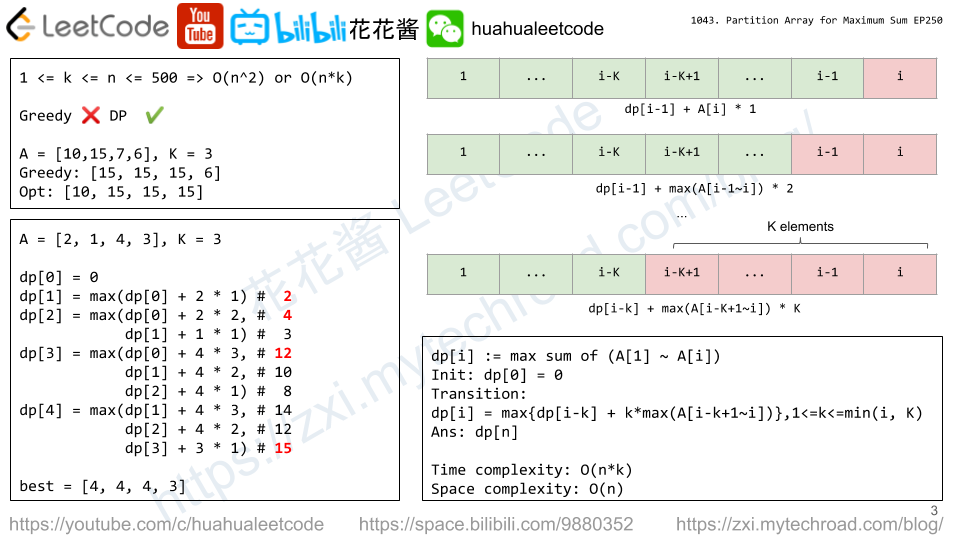Given a collection of integers that might contain duplicates, nums, return all possible subsets (the power set).
Note: The solution set must not contain duplicate subsets.
Example:
|
1 2 3 4 5 6 7 8 9 10 |
<strong>Input:</strong> [1,2,2] <strong>Output:</strong> [ [2], [1], [1,2,2], [2,2], [1,2], [] ] |
Solution: DFS
The key to this problem is how to remove/avoid duplicates efficiently.
For the same depth, among the same numbers, only the first number can be used.
Time complexity: O(2^n * n)
Space complexity: O(n)
C++
|
1 2 3 4 5 6 7 8 9 10 11 12 13 14 15 16 17 18 19 20 21 22 |
class Solution { public: vector<vector<int>> subsetsWithDup(vector<int>& nums) { const int n = nums.size(); sort(begin(nums), end(nums)); vector<vector<int>> ans; vector<int> cur; function<void(int)> dfs = [&](int s) { ans.push_back(cur); if (cur.size() == n) return; for (int i = s; i < n; ++i) { if (i > s && nums[i] == nums[i - 1]) continue; cur.push_back(nums[i]); dfs(i + 1); cur.pop_back(); } }; dfs(0); return ans; } }; |
